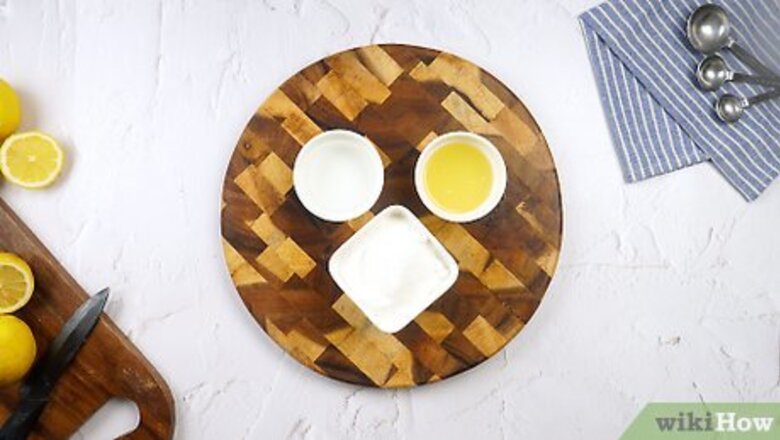
views
Sugar Wax

Measure out the water, lemon juice, and sugar. You will need ⁄4 cup (59 ml) of room temperature water, ⁄4 cup (59 ml) of lemon juice, and 1 cup (200 grams) of white granulated sugar. It’s best to use fresh lemon juice, but you don’t have to. In a pinch, you could also use lime juice!
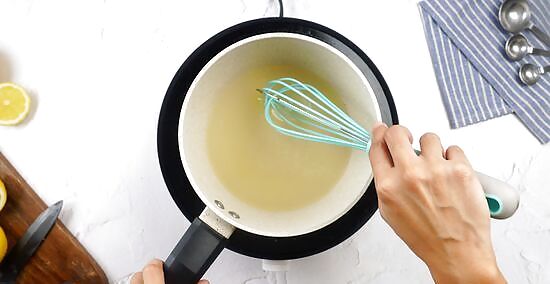
Combine the ingredients in a large pot. Pour each ingredient into a large pot, like a soup or stew pot. Whisk them together until they’re fully combined. Then, place the pot on your stovetop.

Heat the mixture for 5-7 minutes over high heat until it begins to boil. Turn the heat to high and let the mixture heat up. You don’t need to whisk or stir the mixture during this time, but you should keep an eye on it so that it doesn’t boil over or burn.

Remove the mixture from the heat and transfer it to a glass jar. After bringing the mixture to a boil, it will turn into a deep amber-colored liquid. At this point, you can remove it from the heat and transfer it to a glass jar to cool. You should be able to pour it directly from the pot into the glass jar. If you're worried about spillage, you can use a funnel to transfer the wax. Be careful working with the hot liquid and be sure to use oven mitts.
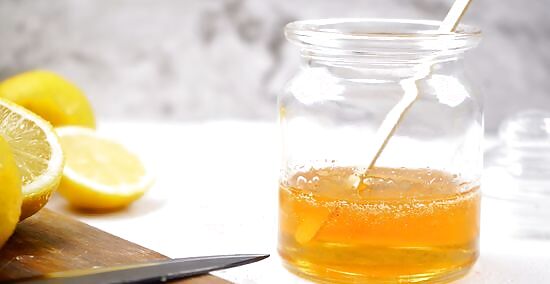
Let the sugar wax cool and thicken before using it on your skin. Check the temperature of the wax frequently. You don’t want the wax to cool completely, since it needs to be little warm when you use it, but it should be cool enough to spread on the skin without any discomfort. You can test the temperature of the wax by applying a small amount to the inside of your wrist. It should feel warm, but it should not hurt at all. Something close to your body temperature is ideal. Always spread the wax on your skin in the direction of hair growth.
Sugar Wax Without Lemon Juice

Gather your sugar, water, and apple cider vinegar. Measure out ⁄4 cup (59 ml) of water, 2 cups (470 ml) of sugar, and ⁄4 cup (59 ml) of apple cider vinegar. Use apple cider vinegar as a substitute for lemon juice, as the sugar and vinegar work together to give the substance a more elastic, waxy consistency. This recipe calls for organic sugar, but you can use white sugar for a cheaper option.
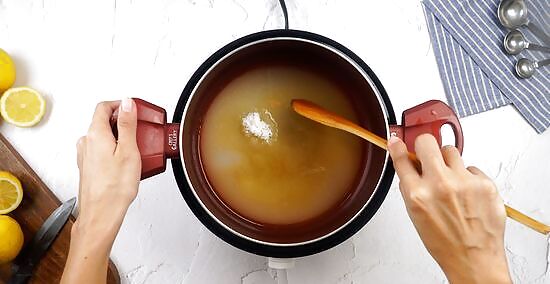
Pour all of the ingredients into a pot. Stir them all together before turning on the heat. Turn on the stove to medium heat and bring the substance to a boil. This should take about 2 minutes.
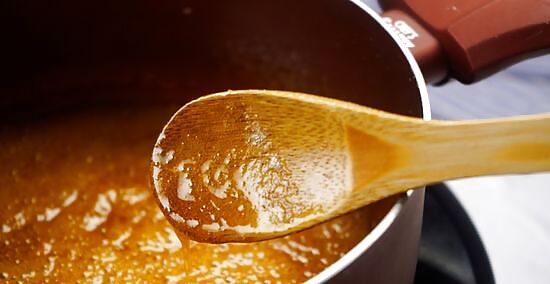
Let it simmer for 25 minutes. Turn down the stove to low heat. Stir the wax with a spoon as it simmers. Depending on your stove, the wax may need a little more time. Keep it on low heat until it is dark brown with a syrupy consistency. Test out the consistency by taking a sample with a spoon and running it under cold water to cool it off. Touch it to your fingertips to make sure it has a waxy consistency.

Transfer your wax into a storage container. Let the wax cool for 10 minutes before pouring it out of the pot. Once it's cooled, pour it into a glass jar or a storage container of your choice. Wait until the wax has cooled off to apply it to your skin. Smooth out the wax over your hair and pull in the direction of hair growth to remove the hair. Store the rest of the wax in a cool place in your home (it doesn't have to be refrigerated). If it's stored properly, the wax will last about 1 month.
Tallow Wax for Candles, Soap, and Beauty Products
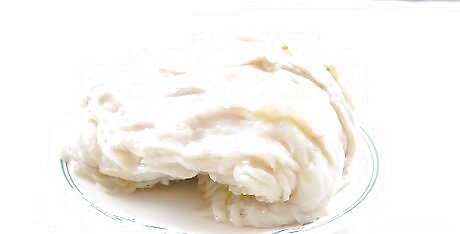
Refrigerate 1 pound (450 g) of beef fat for an hour until it feels firm. Tallow is usually made from beef suet, which is the fat located around a cow's kidneys. Refrigerate the beef fat for about an hour until it’s firm to the touch. You want the consistency to be similar to cold butter. The healthiest suet comes from grass-fed cows. You can usually get grass-fed beef suet from a butcher, but it’s best to call ahead to make sure. You can also use sheep or lamb suet, but those are much harder to find. Cold beef fat is easiest to work with. If you bought yours frozen, pop it in the fridge to defrost it. It usually takes about 24 hours to defrost in the fridge.
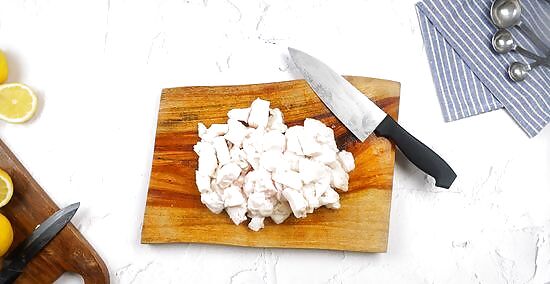
Trim any meat off the fat and cut it into small chunks. You only want to work with the fat, so if you see any meat still attached to the suet, cut it away. Then, cut the fat into small chunks, which makes it easier to process. The exact size of the chunks doesn’t matter too much, but 1 inch (2.5 cm) chunks will probably be the easiest to run through your food processor or blender.
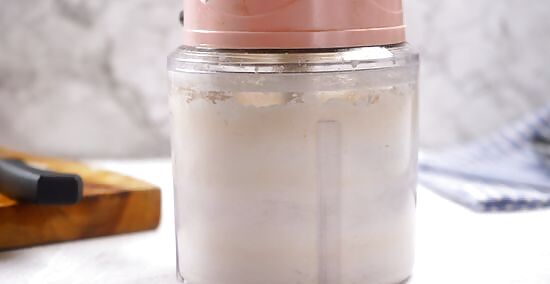
Grind the fat in a high-powered blender or food processor for 2 minutes. Place the chunks of fat into your blender or food processor and set it on medium or high speed. Process the fat for about 2 minutes, or until the consistency becomes thick and paste-like. You can also ask the butcher to grind the fat for you.
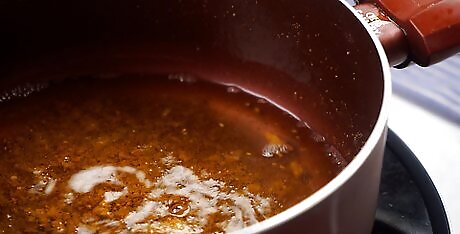
Put the fat in a pot or slow cooker and heat it on LOW for 5 hours. Stir the fat 1-2 times per hour as it renders to prevent it from burning. If the fat burns, you’ll have to toss it and start over! The fat will slowly start to liquefy as it heats up, which is what you want. A large slow cooker or stew pot should be the right size for this. Consider using a pot that you will dedicate to tallow-making in the future, since the rendering process will leave behind a waxy residue that is hard to clean off. You may want to open up the windows in your kitchen and turn on some fans, since the smell starts to get pretty intense!
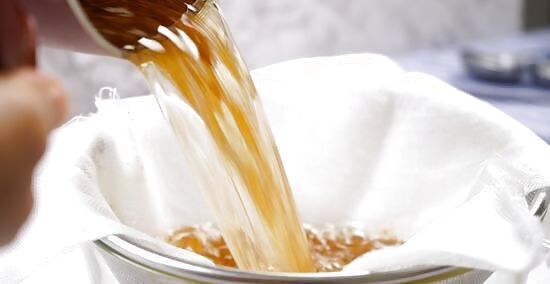
Strain the fat through a cheesecloth to remove the impurities. After about 5 hours, the beef fat should be mostly liquid. The liquid is the tallow. Place a cheesecloth over a large bowl and pour the tallow into the cheesecloth to remove the solids and impurities from the liquid. If you don’t have cheesecloth, a fine mesh strainer will get the job done. Be careful, since the tallow will be extremely hot. After straining it, you should be left with a thick, golden liquid.
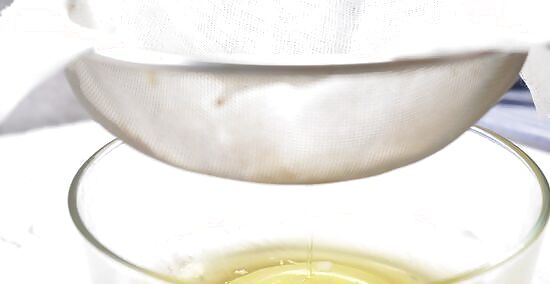
Pour the tallow liquid into bowls or wide mouth glass jars. Discard the solids you strained out and transfer the hot liquid into large glass jars or bowls. You could also pour the tallow liquid into baking pans lined with parchment paper, if you prefer. Pour slowly, be careful, and use a funnel if you need to. Bowls and baking pans are a great option if you plan to cut your tallow into smaller pieces before storing it.
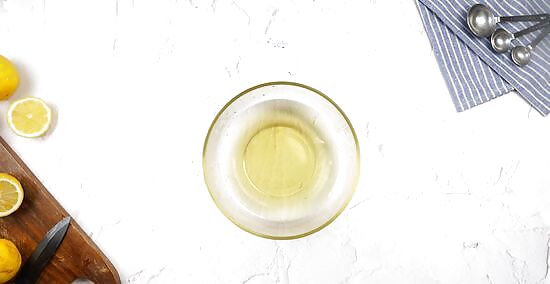
Let the tallow cool for about 8 hours and harden completely. Leave the jars open in an area where they won’t be disturbed. Cooling and hardening will typically take about 8 hours, so you could just let the tallow sit out overnight. Once the tallow cools, it will be hard to the touch and off-white in color. If you need to speed up the cooling process, cool the tallow in the fridge.
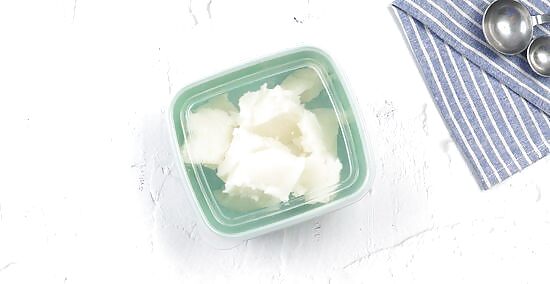
Remove the hardened tallow and store it in air-tight containers. The hardened wax should lift easily. You can keep the tallow whole or cut it into smaller pieces before storing it in an air-tight container to prevent oxidation. You can store the tallow at room temperature, your fridge, or the freezer for about a year. If there’s any liquid remaining in the bowl, toss it out. Don't pour leftover liquid down the sink. The wax residue can clog the pipes.


















Comments
0 comment